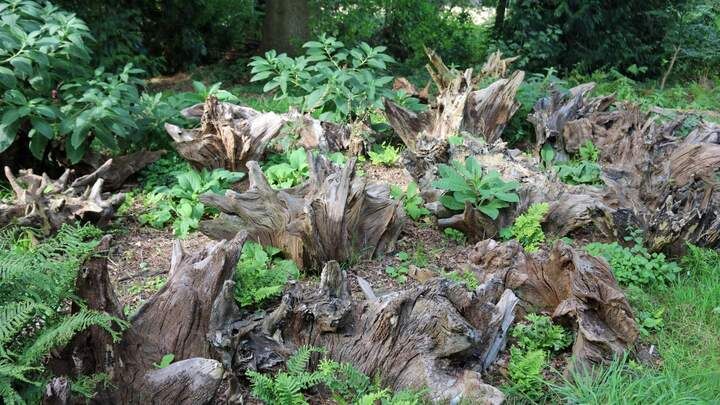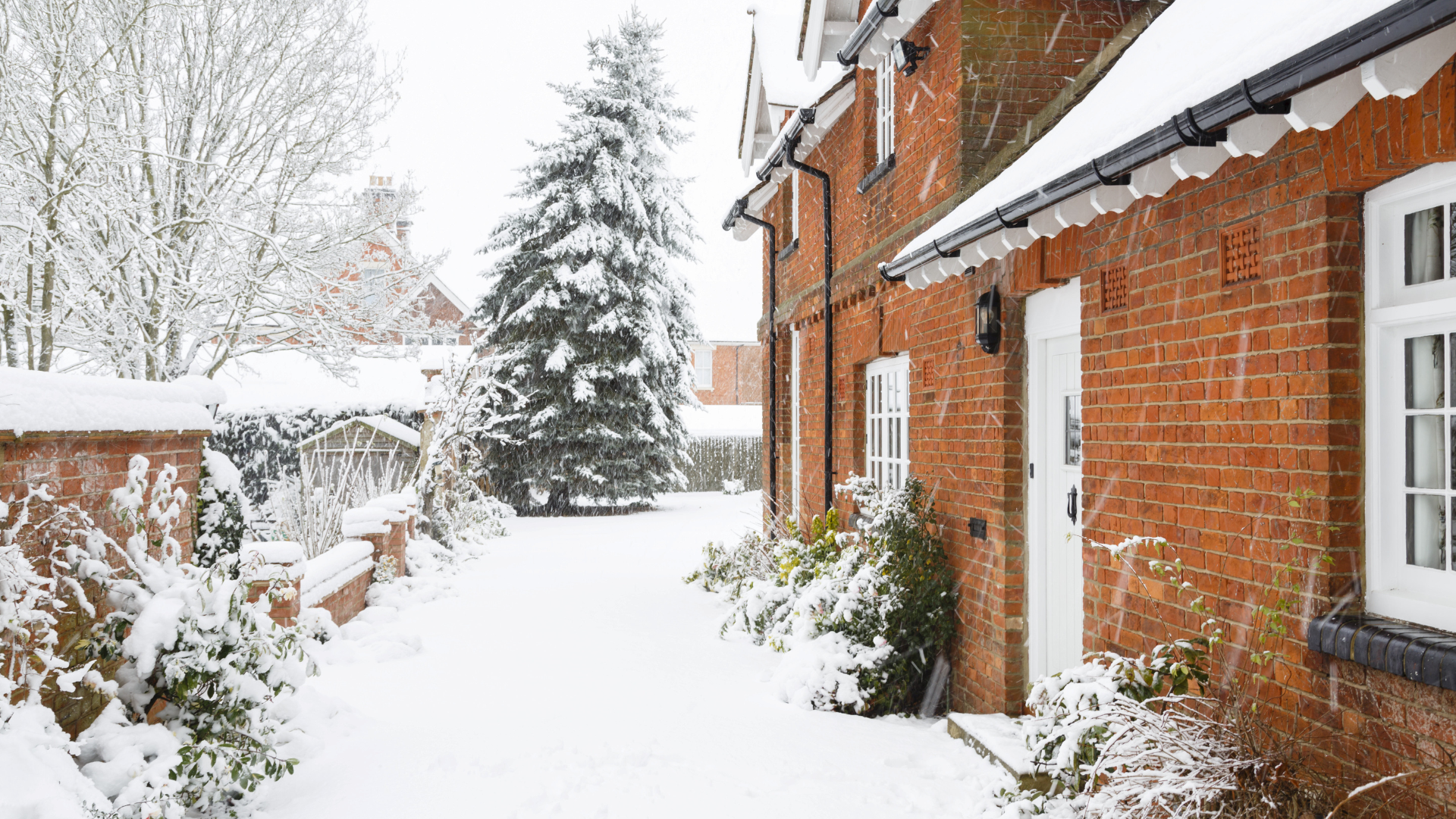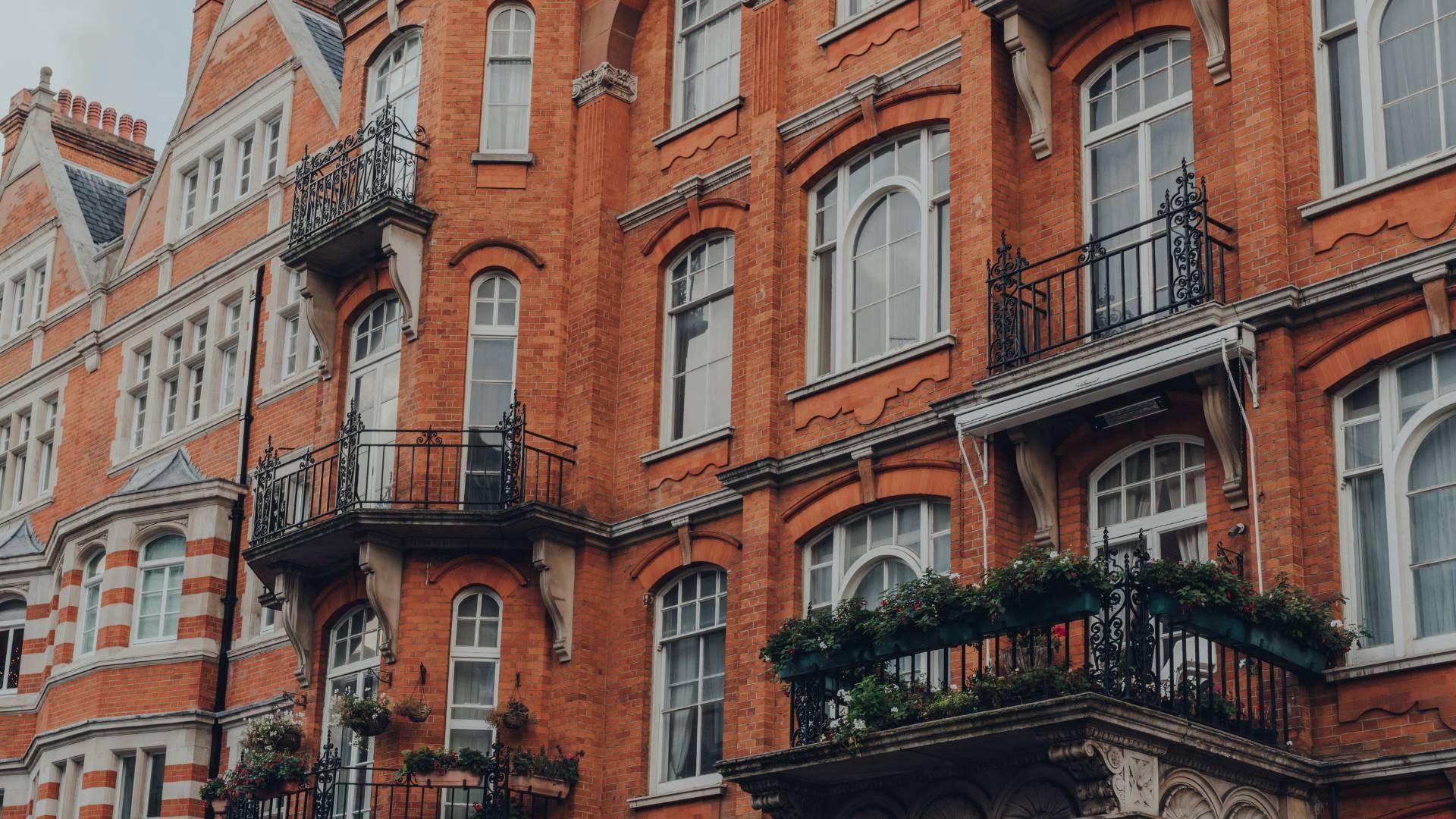
Stumperies date back to Victorian times when rotting stumps, exposed roots and tree trunks were used as a decorative way of showing off one’s collection of ferns and other shade-loving plants. King Charles III is a stumpery fan and his Highgrove garden is home to reportedly the biggest stumpery in the UK.
While overlooked by gardeners in recent times, the stumpery is back in flora fashion. As well as being a great way to reuse natural materials and provide habitat for wildlife, stumperies are stunning garden features. Instagram and Pinterest are full of examples – simply search #stumpery for inspiration.
Stumperies are very sculptural in their form, with twisted roots, hollow trunks and gnarly branches poking out from swathes of lush evergreens. The gaps in the wood itself can be planted up too – fill holes and cracks with compost and add spring flowering bulbs, delicate perennials and hard-working evergreens.
Natural habitat: stumperies in the shade
Stumps, trunks and logs left where they were felled will most probably be in the shade, allowing you to create a lush, green garden feature. Keep any moss and lichen that has naturally colonised the wood and add shade-loving plants such as hellebores, dicentra, woodruff, ferns, dwarf evergreens, wood spurge, primroses, bluebells, lily of the valley and trailing ivy.
Use a stumpery to lighten up a dark area
If you have a dark, damp corner, a stumpery is a great way of bringing this area to life. Plants that thrive in low light have some of the brightest foliage around. Introduce hosta ‘Carolyn’s Gold’, dryopteris ‘Wallichiana’ and heuchera ‘Guacamole’ – their zingy green leaves will work brilliantly against the dark brown of the wood, lightening and brightening instantly
Stumperies can look spectacular in the sun
While it’s traditional to create a stumpery in the shade, a weather- and time-worn stump can create a stunning focal point on a terrace or even in a border. Stumperies in full or partial sun will need watering well and it’s advisable to mulch in hot spells. Try erigeron, pasque flower, creeping thyme, saxifrage, sedum, poppies and campanula if your stumpery basks in high temperatures.
Modern stumperies to try
While the Victorians focused on actual tree stumps and their roots, a more modern take involves logs. Logs can be upended and semi-submerged in a flower bed so the cut surfaces are facing skywards. Plants can be added all around them so over time, the top of the logs are just visible. If the logs develop holes, fill with compost and add a plant to create extra height. Logs can also be used in place of rocks in a rockery – plant with alpines and add decorative gravel for a very different type of flower bed.
Where do I get a tree stump, root or logs?
Not everyone will have an old tree stump in their garden and if you don’t fancy waiting for the next storm to come and uproot one of your trees, there are alternatives. Stumps can be acquired from tree surgeons, land clearance specialists and even online at Etsy. Also try reclamation yards and don’t discount the power of social media. Ask members of local sites and pages if they’re having any trees cleared – you may end up a happy beneficiary.
We’d be delighted to advise you on how a stumpery and other in-vogue garden trends have affected your home’s value and desirability. Call our team for a free property valuation.
Share this article
More Articles
Sign up for our newsletter
Subscribe to receive the latest property market information to your inbox, full of market knowledge and tips for your home.
You may unsubscribe at any time. See our Privacy Policy.




